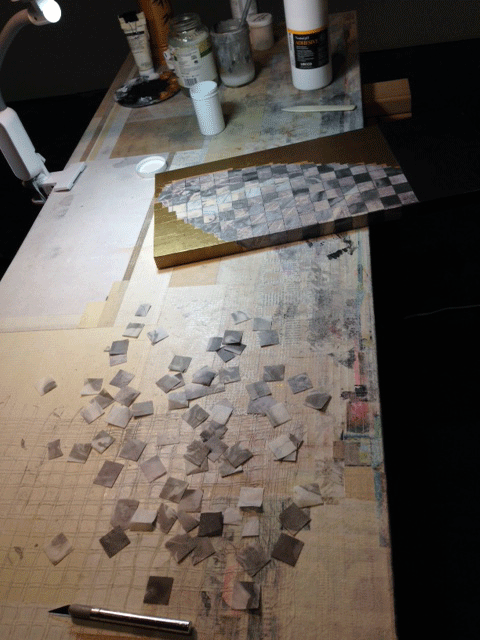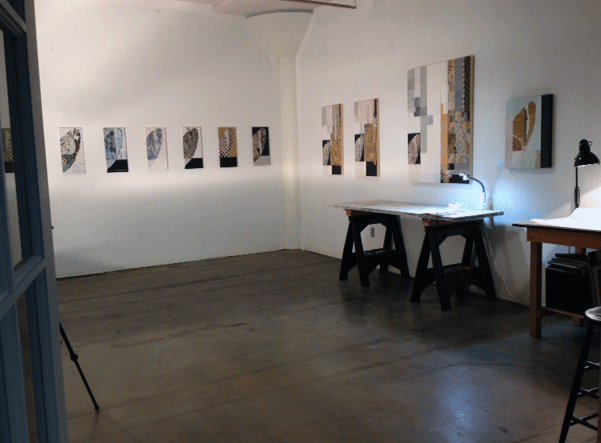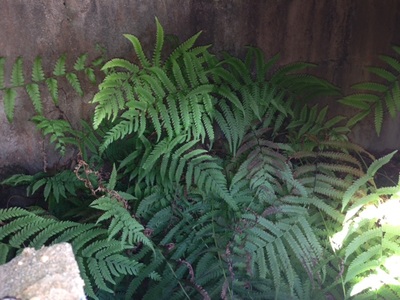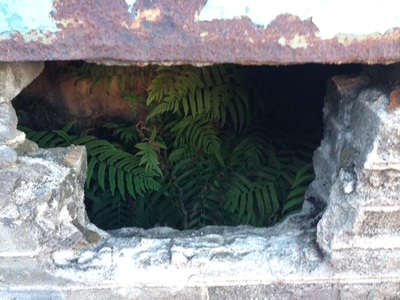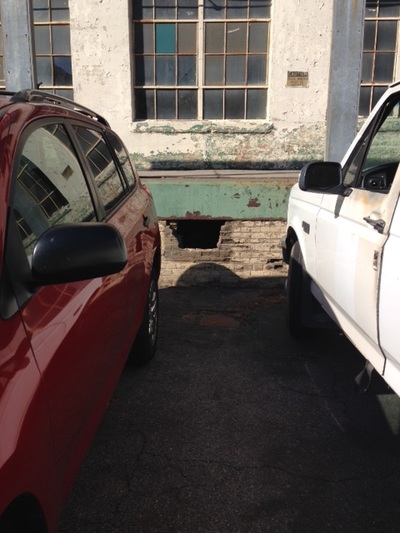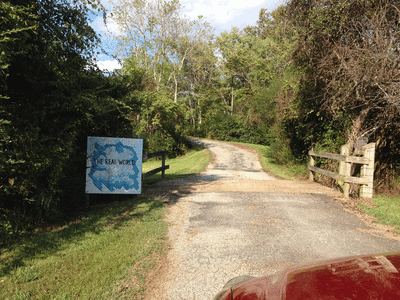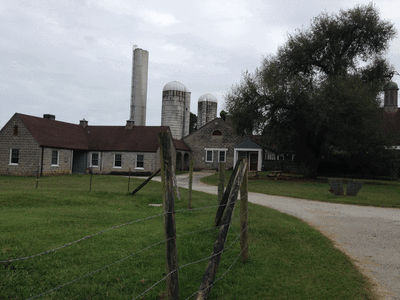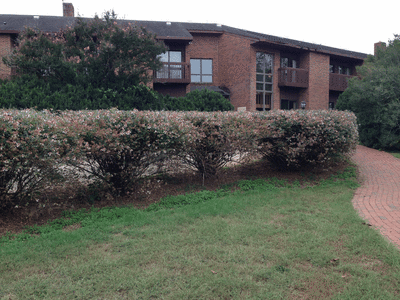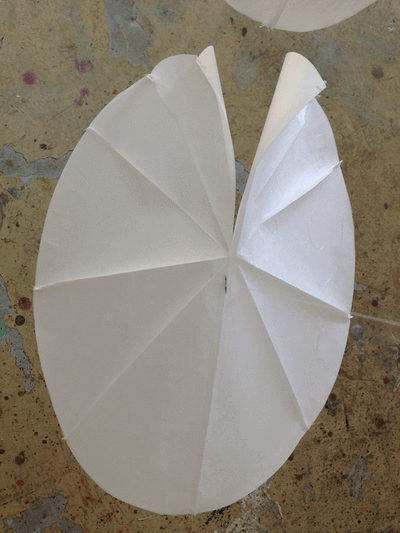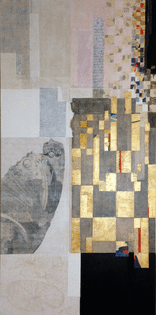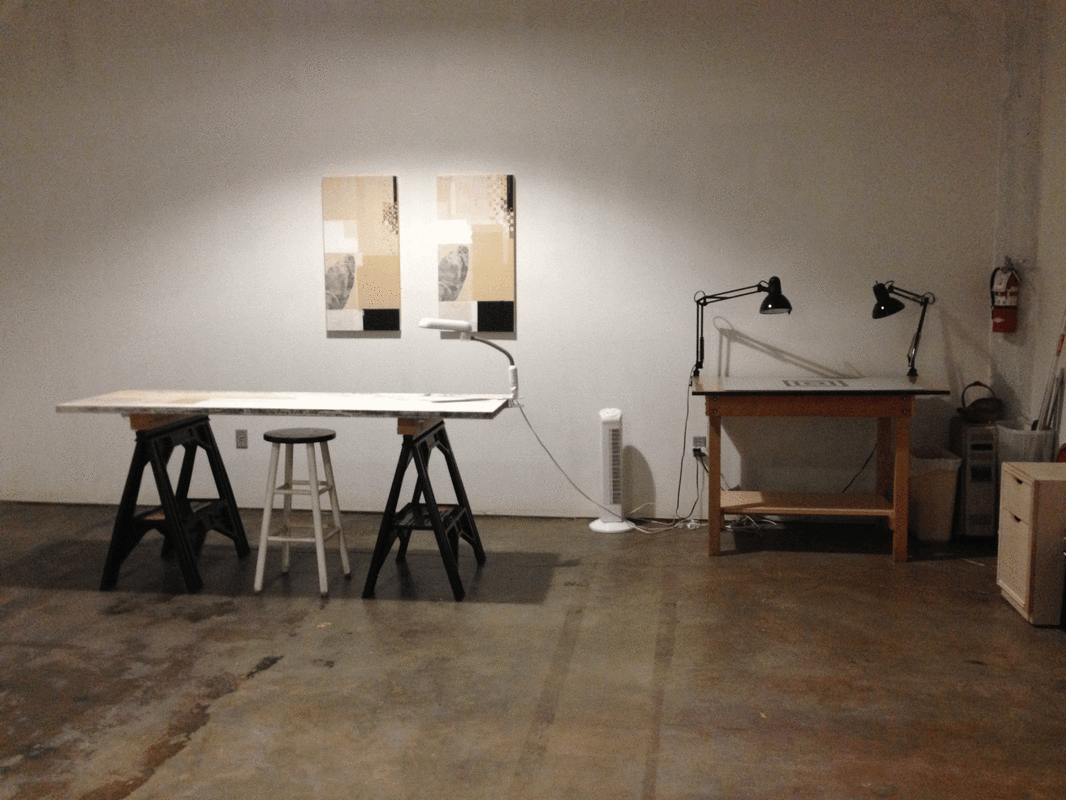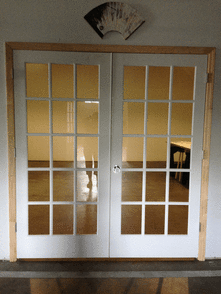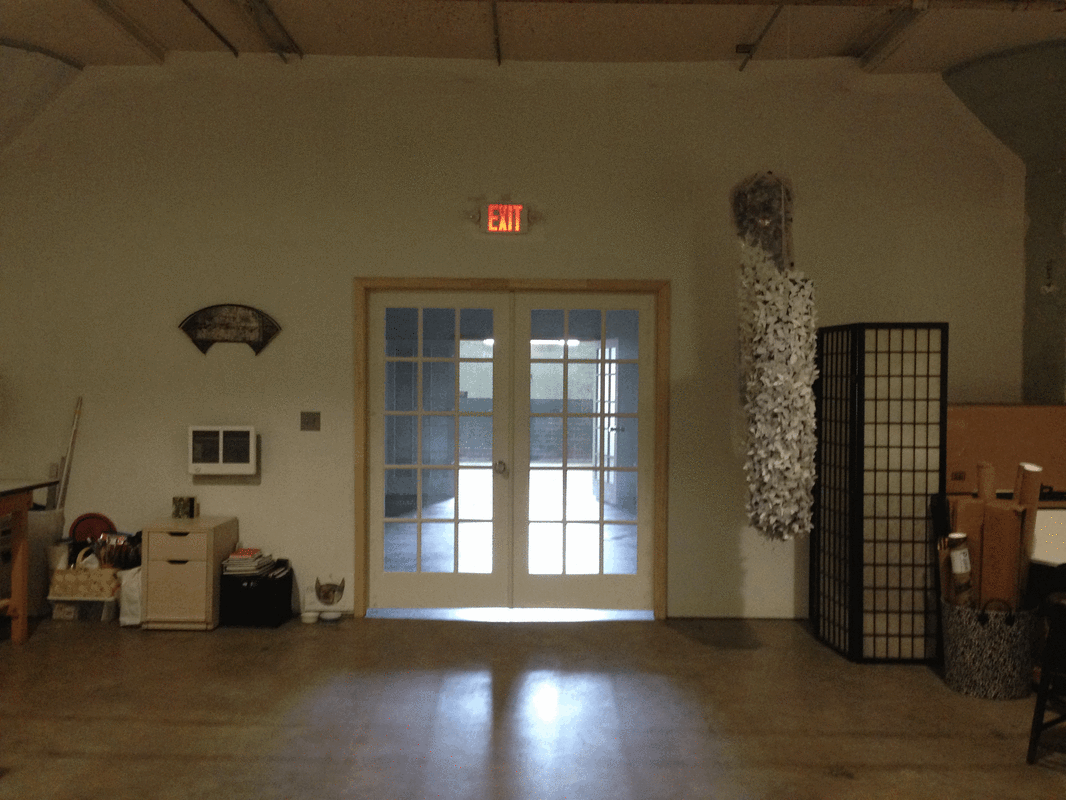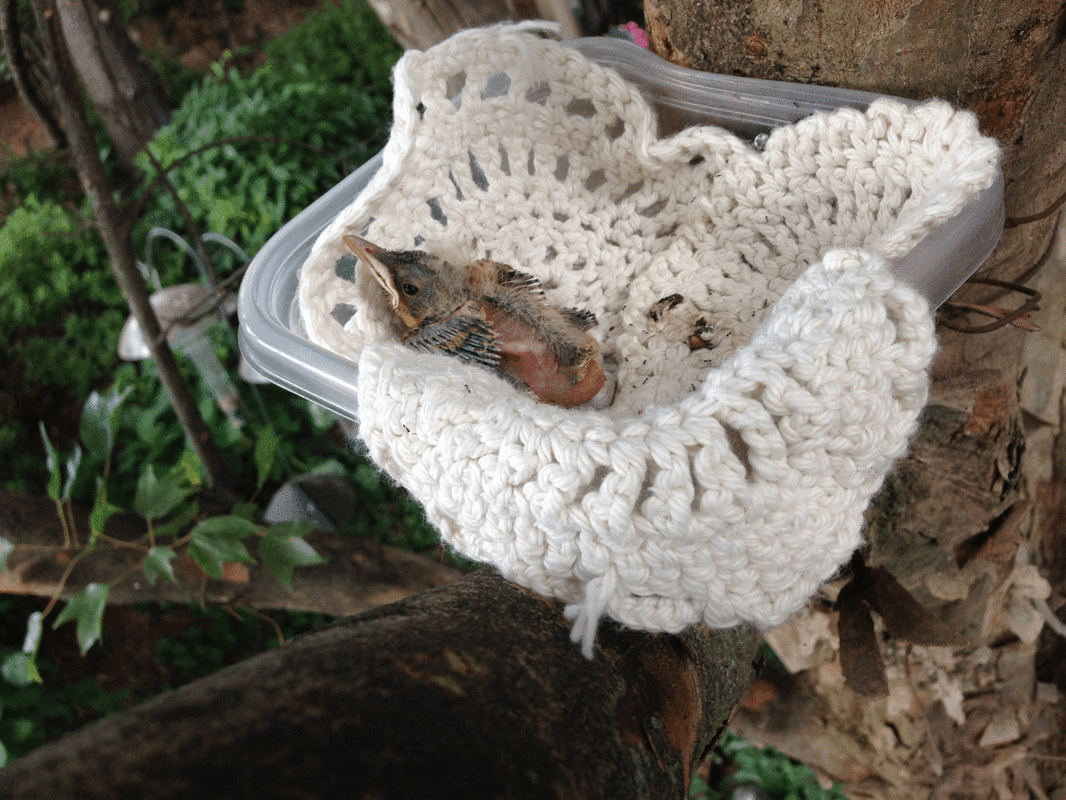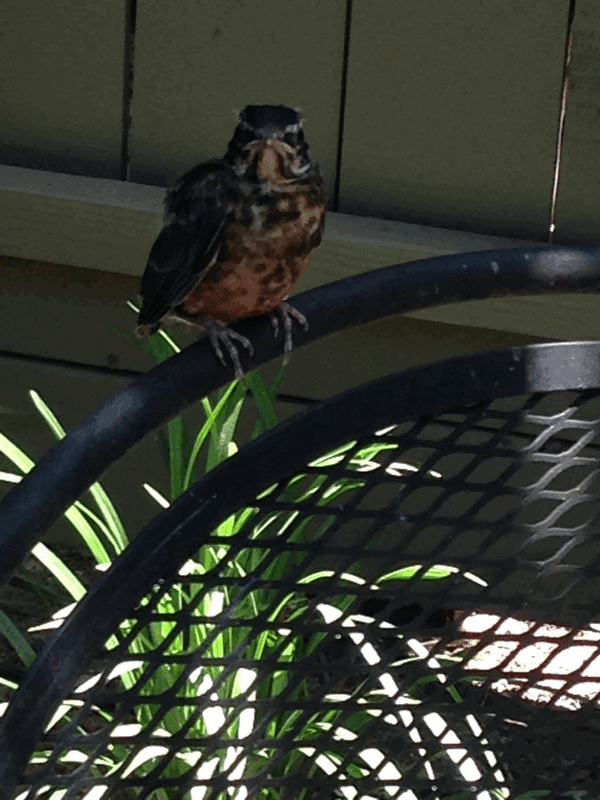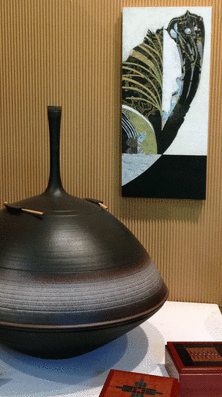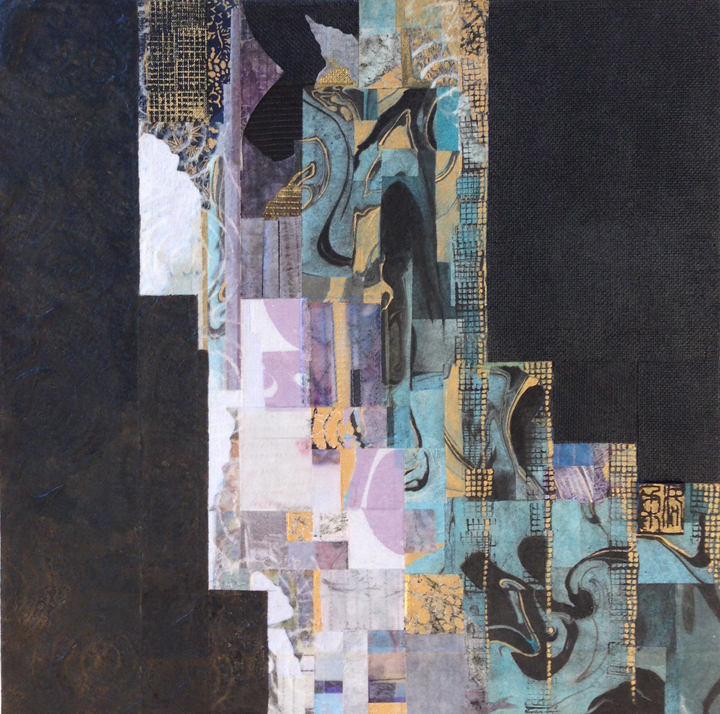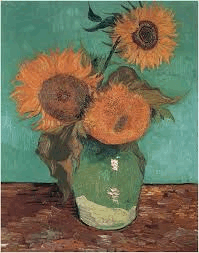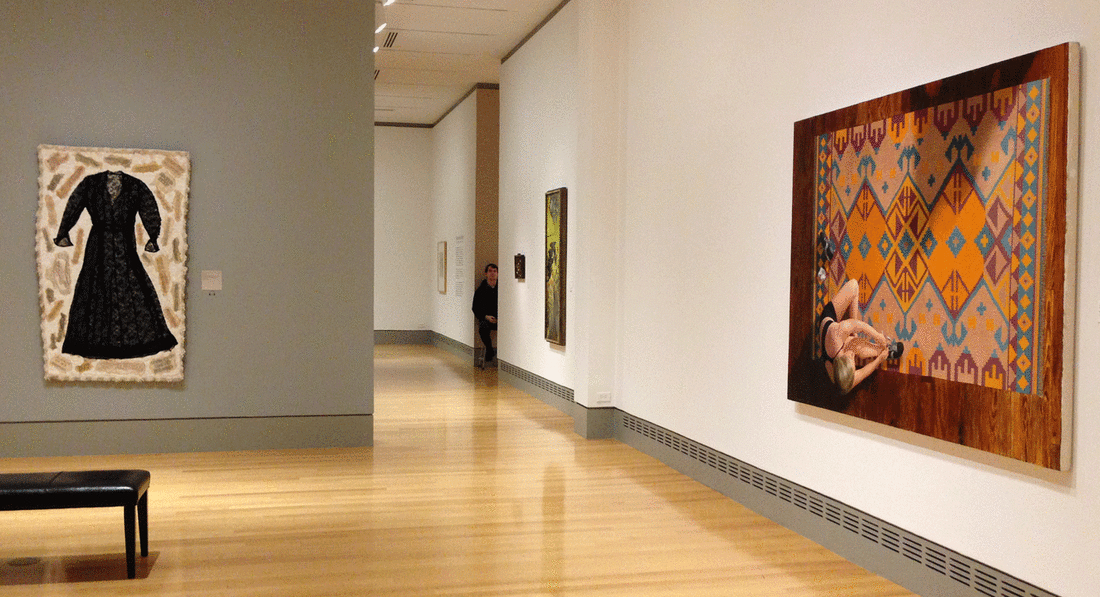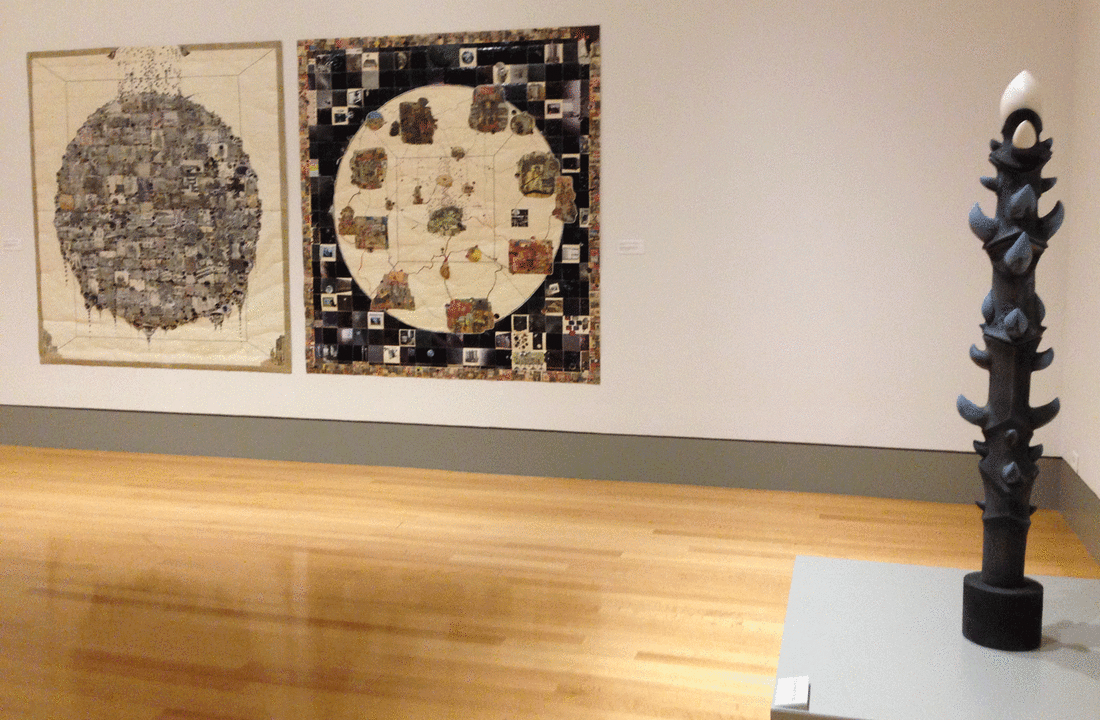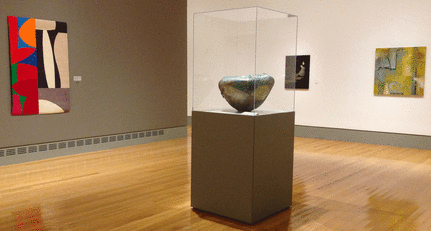What's new in PW3225? PW3225 = Print Works, Building #3, Floor #2, Studio #25, Taylors Mill. What's new? Works in progress. Let me be honest: I am less likely to share images of my work in progress than the finished artwork. Vulnerability is an issue, even for my mid-career artist self.
I recently completed a 48x36-inch work as well as two of three 22x10-inch pieces (see pic of number three in progress). All of these are intended for my solo exhibit "Remnants" in Greenville's Metropolitan Arts Council gallery in January/February 2017. As I move toward the show's installation date, I've devised a way to make myself more accountable by recording studio time in my cell phone calendar. My peak creative and productive window is 5-hours. While wielding an Xacto knife to cut a multitude of collage pieces (see pic of working table), it is prudent to know when to stop. A lack of attention can result in cuts; blood is not included in my personal definition of "mixed media."
Speaking of knowing when to stop, a colleague and friend who recently visited my studio, paid me what I consider a compliment: "You know when to stop." She is referring to not overworking a piece, because if the art is over-baked, it will taste that way. Overworking leaves no room for your imagination, only mine.
The other pics are from December's First Friday in PW3225, just prior to a steady stream of delightful visitors. In a matter of weeks, the cradled wood collages and the suspended cocoons will travel from PW3225 to be "what's new" at the Metropolitan Arts Council. PW3225 will be empty but ripe for "what's new" in 2017.
I recently completed a 48x36-inch work as well as two of three 22x10-inch pieces (see pic of number three in progress). All of these are intended for my solo exhibit "Remnants" in Greenville's Metropolitan Arts Council gallery in January/February 2017. As I move toward the show's installation date, I've devised a way to make myself more accountable by recording studio time in my cell phone calendar. My peak creative and productive window is 5-hours. While wielding an Xacto knife to cut a multitude of collage pieces (see pic of working table), it is prudent to know when to stop. A lack of attention can result in cuts; blood is not included in my personal definition of "mixed media."
Speaking of knowing when to stop, a colleague and friend who recently visited my studio, paid me what I consider a compliment: "You know when to stop." She is referring to not overworking a piece, because if the art is over-baked, it will taste that way. Overworking leaves no room for your imagination, only mine.
The other pics are from December's First Friday in PW3225, just prior to a steady stream of delightful visitors. In a matter of weeks, the cradled wood collages and the suspended cocoons will travel from PW3225 to be "what's new" at the Metropolitan Arts Council. PW3225 will be empty but ripe for "what's new" in 2017.
